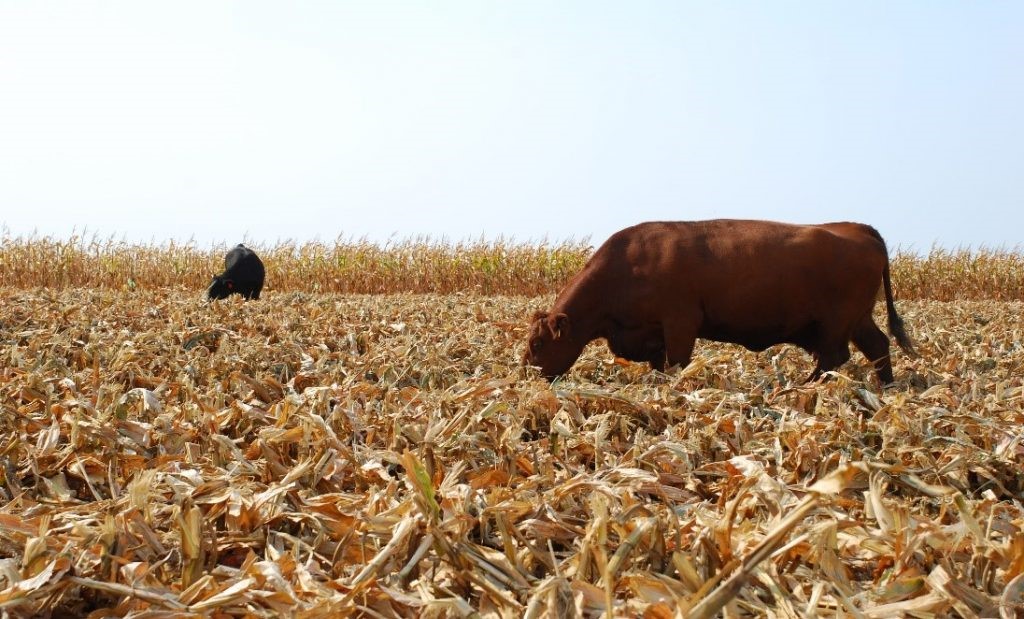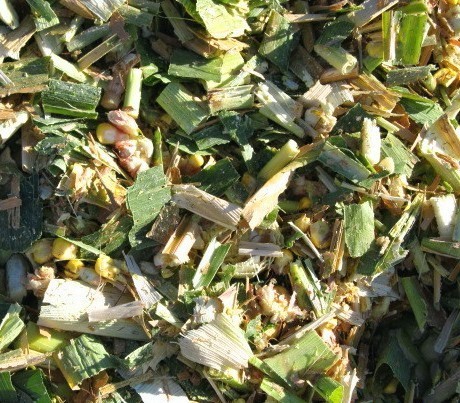When green leaves can be fed to buffaloes, cows eat right away, but in the harvesting season, they will get a large amount of them so that buffaloes cannot be consumed in a short time. Corn residue silage, when applied to dairy cows, replaced 48% of green grass in the diet.

Forage crops include straw, industrial by-products, agricultural by-products, and some non-grass feed crops. In this article, I would like to introduce to you some of the methods of processing by-products from maize cultivation.
Method of maize stover, corn leaves with urea
The maize harvest must be exposed by fencing 2-3 days or chopped 5-10 cm and then dried out to fly 1-2 days less water vapor in winter conditions without sun. As corn plants are slightly re-absorbed, the latter is easily absorbed with water dissolved urea.
Criteria for essential materials are as follows:
– Urea 2Kg
– 60 liters of water
– Maize after harvest 100Kg
– Sodium chloride 0.5Kg.
Incubation method:
The process of incubation is as follows: Dissolve urea, salt in water in the above ratio. Place each layer of chopped maize into the tank, each layer is 10-15 cm thick (semi-gang). Then, apply the urea to the urea water in the scattered straw. Dilute with feet or use rolling stone rolls to roll back tight. Give another layer of corn and then urea.
So until the compost and raw materials and then composting pit.
Usage:
– After 2-3 weeks start feeding cattle.
– Feeding of buffalo and cow by urea with old maize plants accounted for 20-25% of total energy intake but still gave 10-11kg / month gain.
Old urea maize plants can completely replace hay and a portion of grass in the diet.
Notes:
– Try to finish the compost pit in 1 day. As fast as possible to urea not to fly away, ensure the quality of feed.
– Place the layers of maize as above finished with the banana leaves, nylon… covered with a thin layer of straw 5 cm. Then put a few layers of brick on top to compress.
– Should be added more molasses at a rate of 10 liters of molasses for an incubator of 1.5 m3 capacity.

Method of processing corn starch meal
Step 1:
Collection of each by-product of maize production, including postharvest foliage (30-35 cm cuttings), corn husks and corn cobs. Corn stalks, corn leaves.
Step 2:
Preliminary processing:
– With maize, maize leaves after harvest: leave old dry leaves close to the tree; Removal of the original paragraph of 20 cm; Cut the remaining trunk to 3-5 cm.
– With corn husk, corn husk: Put dry yellow leaves outside; Remove impurities; Chopped.
– With corn cores: cut 2-3cm.
Step 3:
Processing and preservation: Spread the maize by-products on a clean background. Dry until just touch on any leaves, the leaves are crumbly, the material has reached the moisture content of <10%, this is the ideal state to make cornmeal. Use grater or pestle crushed, mash the by-products into powder. After that, the powdered powder was ground into a plastic bag or solid shell bag.
Tighten the mouth of the bag to keep it in storage for later use (mixed with molasses for direct feeding or as a licking stone) for ruminants.

Method of corn residue silage and post-harvest maize by-products
Corn residue silage stored for more than 6 months has solved the shortage of green food of cattle in the winter. With dairy cows, maize silage replaced 48% of green grass in the diet (dry matter content) and accounted for 20.6% of dietary dry matter, which reduced feed cost by 8-10%. Never affect the yield and quality of milk. The quality is similar to that of corn silage. The methods of processing corn residue silage and by-products are as follows:
Prepare:
– Corn worm extinguishes: It usually takes about half a day to dry the corn, but it should not be too dry before it is chopped and put into the compost. During drying, every two hours to turn once to let the trees wither, but avoid the top layer dry but the bottom is still fresh.
Normally, every 4 to 6 hours, randomly cut one leaf of corn (about 3-4 times the same), firmly in the palm. After opening, if the leaves on the leaves leave the road is unclear and moist but no water or leaves are not broken, then their moisture content reached ideal (65-70%) to bring silage.
The rate of raw materials is as follows:
– Corn/corn husk has dried up 100Kg
– Rice bran 4Kg
– 4kg of cassava powder
– 5Kg molasses (for corn harvested at corn ripened wax); 10Kg (for dry corn)
– Sodium chloride 0.5Kg
– Clean water 10 – 20Kg.
Procedure:
Stamping, chopping 3-5cm (if there are the as good machine). Remove the old dry leaves at the base of the tree (if any). Mix the remaining ingredients with water according to the proportions in the table above. When mixing molasses, one ounce of 10 liters should be used. Take 5 liters of cold water with 5 liters of cold water, pay attention to stir and evenly for each layer of corn in the hole. The amount of molasses solution required for the entire feed layer in the composting pit.corn residue silage
About 72 hours after the composting, the anaerobic fermentation stops. Corn feed or corn by-products will be converted into silage. Then, start a period of stability, lasting about 6-7 weeks. Thus, the corn residue silage can feed the cattle to eat from the 8th week. This food is stored for cattle to eat for 6 months. Each time to finish the food must cover carefully, avoid water penetration into the pit compost.

